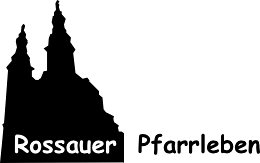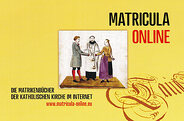Church Guide in English Language
A warm welcome to all visitors to the
Wiener Servitenkirche
„Maria Verkündigung”
(„Annunciation to the Virgin”)
in the Parrish of „Rossau”
With imperial decree, dated Sept. 16th, 1638, by Emperor Ferdinand III, the order of the Servites (probably through the energetic help of Prince Octavio Piccolomini) was allowed to found a monastery in Vienna. As early as May 19th, 1639, a temporary wooden church was consecrated in the presence of the Emperor, his spouse, and many princes. On November 11th, 1651, the foundation stone was laid for the present beautiful edifice, which was then built in two stages. Consecrated in 1670, ist indoor decoration was completed in 1677. The chapel of St. Peregrin [8], as well as teh two spires, were added in the 18th century.
Inspired by an Italian architect Palladio, the church of the Servites was built by Martin Carlone. The church served as a model for other famous sacred buildings in vienna, for instance St. Cahrales’ church (Karlskirche, fourth district), the church of the Salesians sisters (Salesianerkirche, third district), and St. Peter’s church (Peterskirche, first district).

The ground plan of our Church shows an elongated elliptical main room, squared off by two arms facing each other. The western part is greatly elongated, forming the altar room. Four identical, semicircular arms are inserted between thes crossed arms. Behind the main altar the sacristy ist situated, above which - open to the church nave - we find the choir for the friars.
The most important work of art is surely the „Pietà” (from about 1470) [1] at the altar of Our Lady of Sorrows. Under this altar, the tomb of Prince Octavio Piccolomini, who was a main antagonist of Wallenstein (an important general in the 30 Years War), is situated. Piccolomini’s escutcheon can be found above the church entrance and in the nave, above the altar of Our Lady of Sorrows. Because of his very active help, the building of this jewel in baroque style has been rendered possible.
Another patron of art was Baron Christoph of Abele; he donates the „Liborius altar” [6], above which his blazon is depicted. Beside the altar can be fund the figures of two saints. St Christophorus, the Patron saint of Abele, and St. Clara as the Patron saint of his wife. In Abele’s city home the convent of the Servites found shelter during the Turkish siege in 1683. When the Turkish army drew nearer, the demolition of all hauses outside the city walls was ordered; luckily, the church was spared being razed like the suburbs and so survived complete to the present day.
At the altar of St. Sebastian [2] we find the figure of St. Augustin, according to whose rules the Servites live, and the figure of St. Ambrosius, by whom Augustinus had been baptized.
The beautiful pulpit [3] from 1739 was made partly by a Servite lay brother from Mieders in the Tyrol.
In our church, the order’s special devotion to the Virgin is shown by the picture of the main altar [4] with the scene of the Annunciation. It is flanked by more tahn life-size figures of St. John the Baptist’s parents, Zaccahria and Elizabeth, and on the other side by the Virgin’s parents, Joachim and Anne. On the gablets of the four side altars located in niches we find different figures of St. Mary an - around the paintes clock - another representation of the Annunciation.
The two large frescoes on the ceiling show the Ascension and the Coronation of Our Lady. They are surrounded by eight medaillons showing scenes of Jesus’ life.
The figures sitting on the arch-formed ledges above the vaults of the side altars are prophets and kings from the Old Testament.
The so-called "Cross of Gallows" [5] from the 13th century, attached to the wall to the left of the church entrance, was originally located on the place of execution, today's Schlickplatz.
A deeply venerated saint of the Order of the Servites is St. Peregrin, the patron of people suffering from leg illnesses or cancer. The entrance to St. Peregrin’s chapel (8) is located at the left side of the altar of St. Anne [7]. Special attention should be paid to the textile pictures under glass on this altar and on that of Our Lady of Sorrows [1].
Two more altars are dedicated to St. John [9] and to St. Philippus Benitius, another saint of the Order of the Servites.
On the right-hand side of the church entrance you can find the chapel of St. Juliana Falconieri, the „mother of the Servitian nuns” [10], and on the left, the chapel of St. John Nepomuk, the patron saint of the Austrian Province of the Order of the Servites [11].
A beautiful wrought-iron latticework from 1670 separates the church nave from the entrance.


